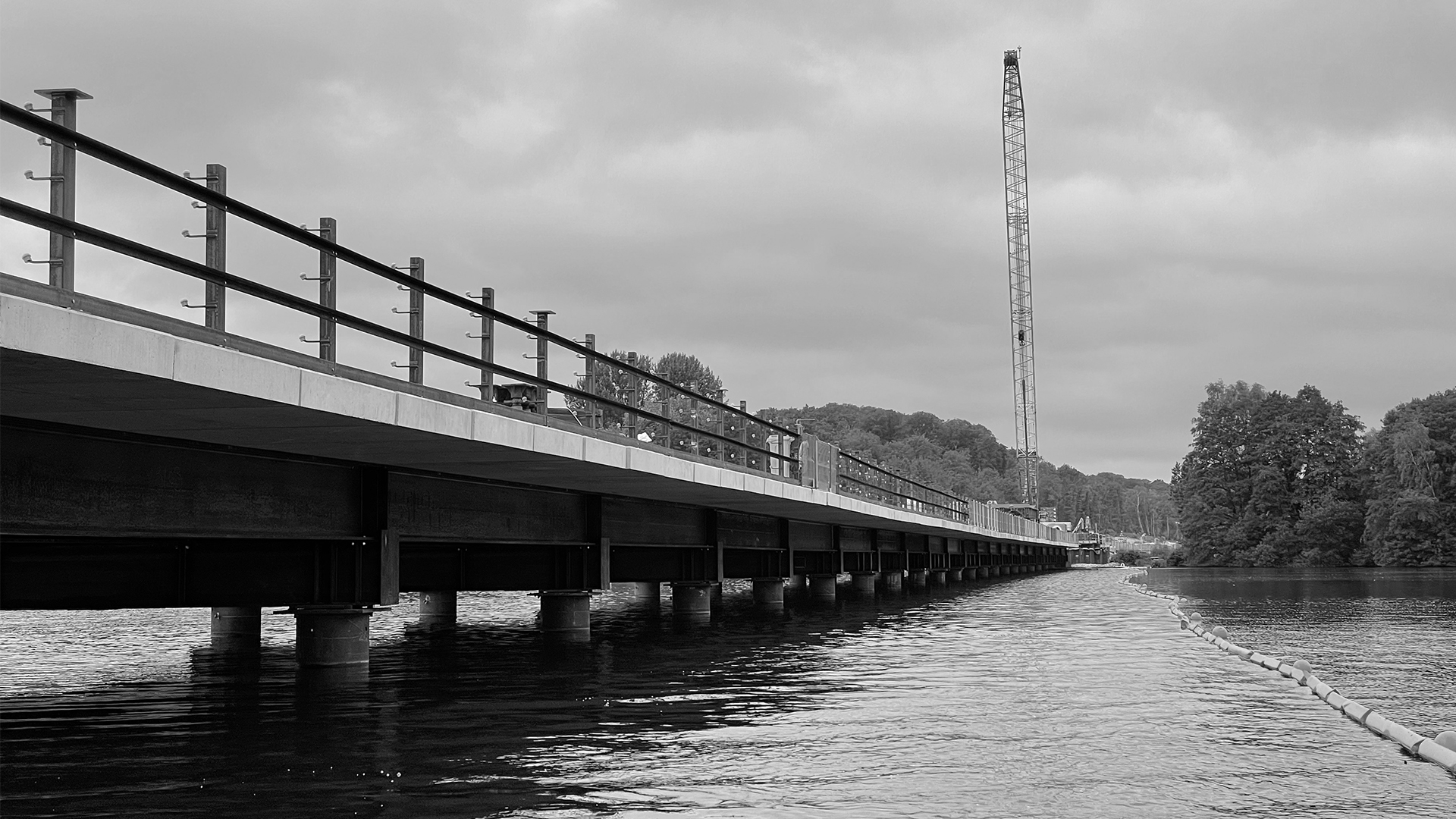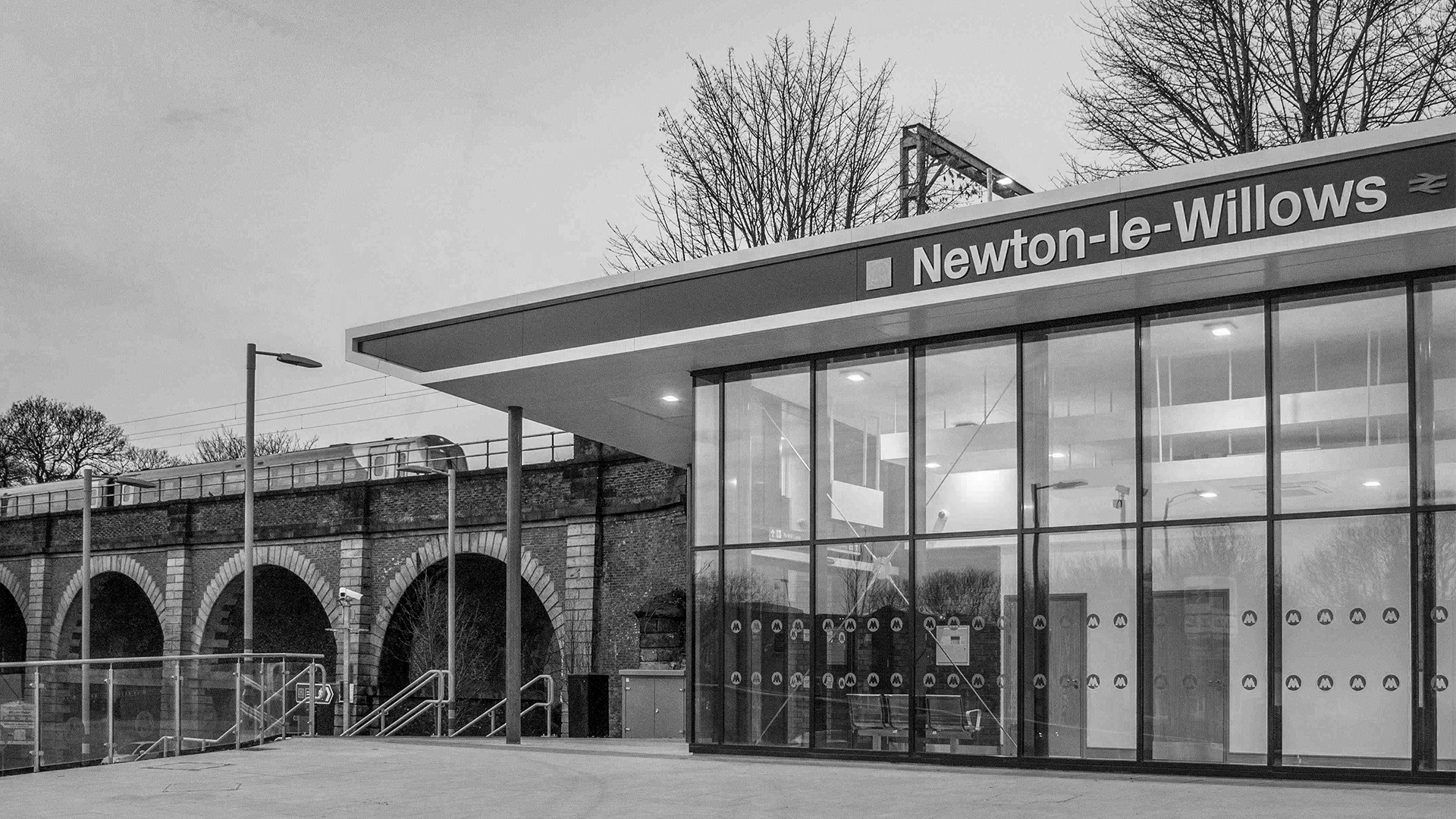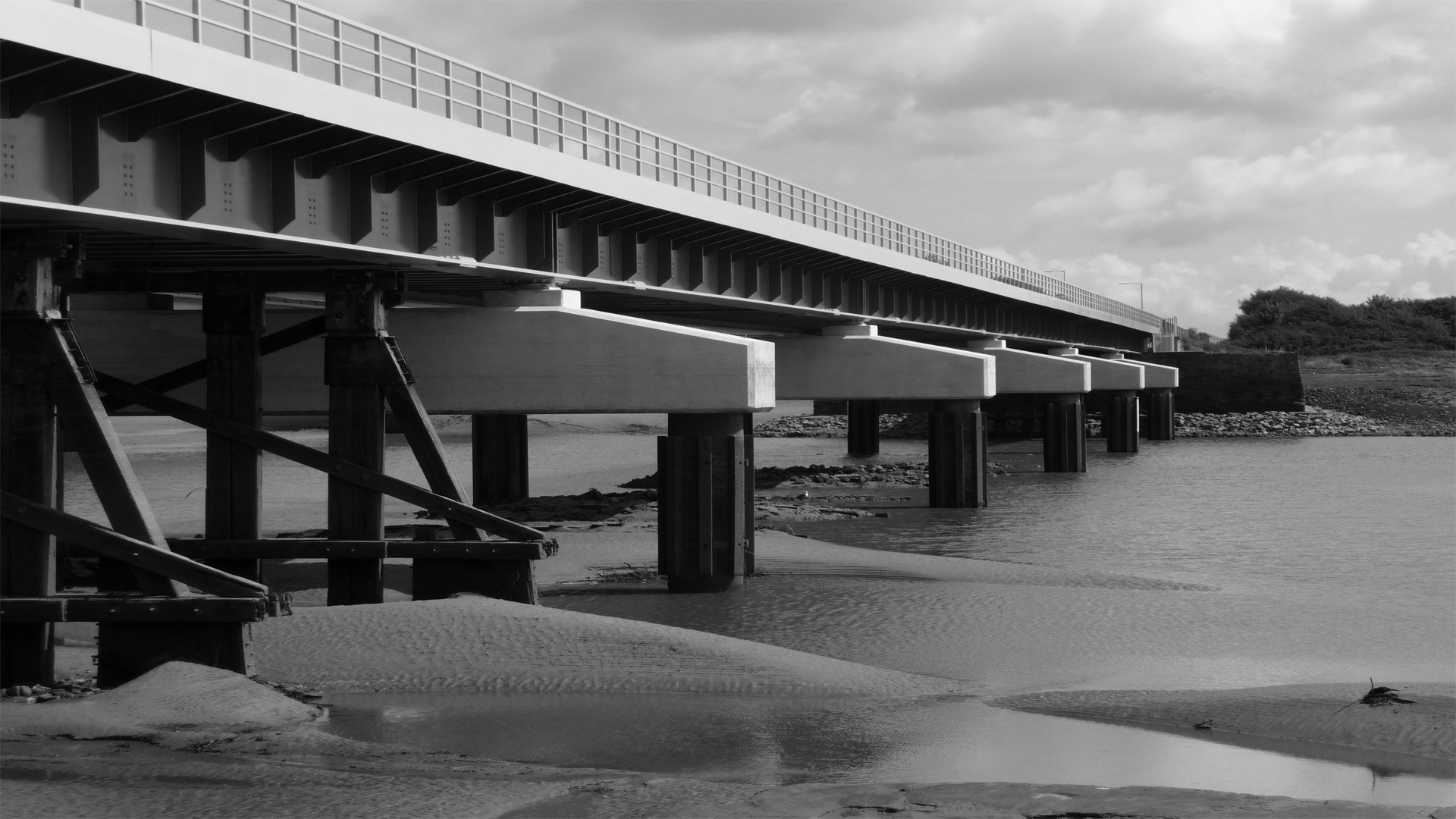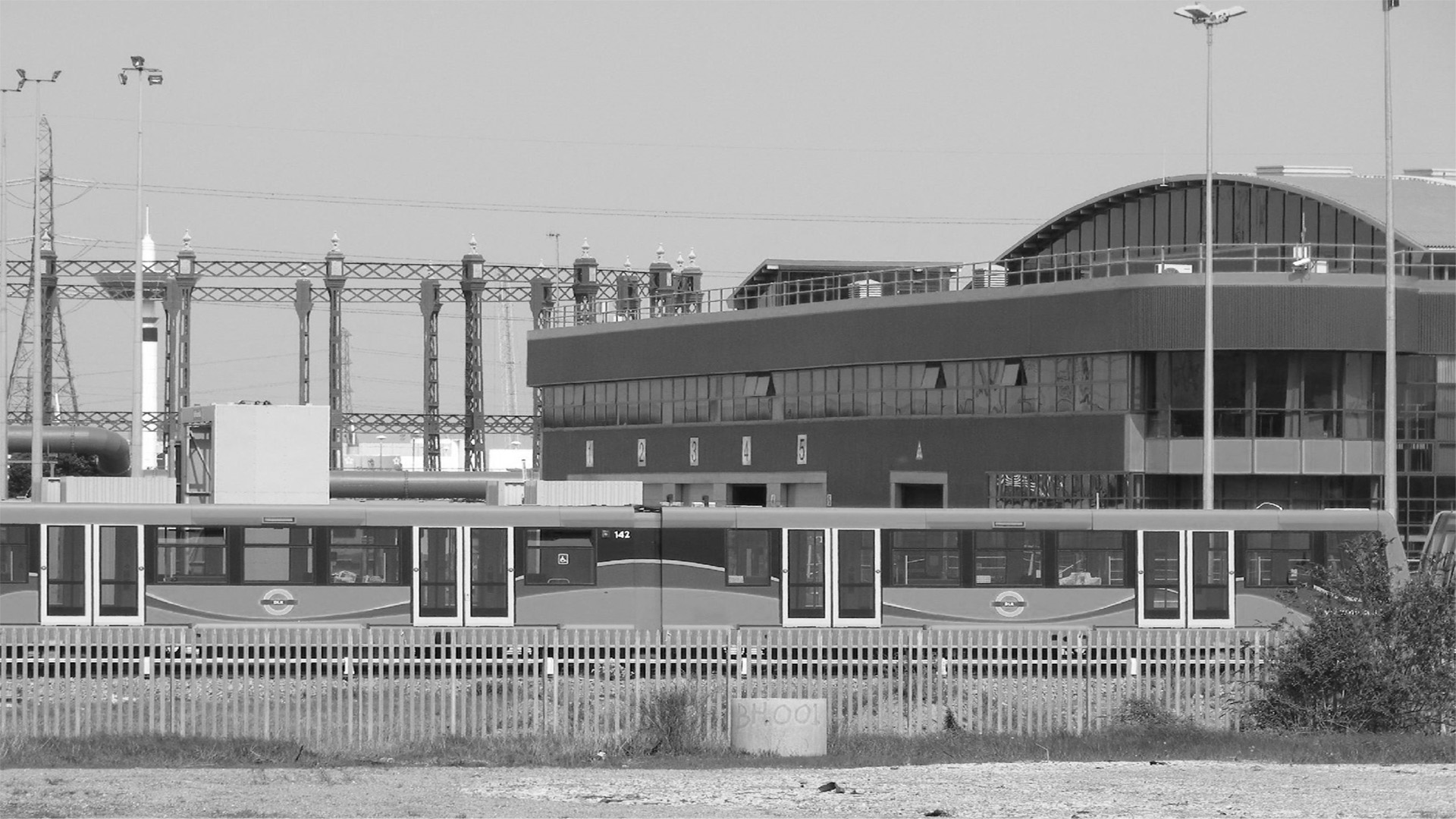Barmouth Viaduct
UK, Wales
Project synopsis
Detailed temporary works design of the replacement spans for Barmouth Viaduct to match that of the former structure. The works layout closely follows the existing spans, so the overall appearance of the structure remains practically unchanged.
Contractor
Alun Griffiths
End client
Network Rail
Awards
RICS Regional Awards 2024 - Refurbishment/ Revitalisation award (Wales), British Construction Industry Awards 2024 - Temporary Works Initiative of the Year
Network Rail outlined plans to restore Barmouth Viaduct to it's former glory which is located in Northwest Wales, the scheme sees the viaduct's biggest restoration in it's 156-year-old history.

Barmouth Viaduct is a Grade II* listed single track railway and pedestrian viaduct across the Afon Mawddach estuary near Barmouth. Originally constructed in 1867, the timber viaduct was modified in 1906 by the inclusion of three fixed and one swinging metallic spans. These spans have suffered significant corrosion and were considered life expired in 2020 so Network Rail outlined plans to restore the viaduct to its original glory.
Tony Gee and Alun Griffiths developed an innovative bespoke method for the design and construction of the replacement structures. A cornerstone of the approach was to prefabricate as much of the structure as possible away from the estuary, reducing significant construction risk. Another key aspect was the development of a pioneering temporary installation truss and sequencing that utilised support mechanisms from existing and newly installed structure.
Firstly, the 36m and 40m main span girders were delivered to the south side of the estuary, 700m from the metallic bridges. The new girders and temporary works truss were loaded onto bespoke rail transport and pushed across the timber structure and located inboard of the existing truss girders. The new girders supported the existing bridge whilst it was demolished in manageable sections while supporting rolling gantries. Upon removal of the existing structure the new girders were slid apart and jacked down into their final position. Their final position deck panels were then installed from pontoons in the estuary.
This methodology had overwhelming advantages over standard methods including:
• No construction presence in Barmouth during tourist season with most construction activities based in a remote compound.
• No significant works in the estuary, minimising impact on the SSSI.
• Ensured the integrity of the existing structure throughout the full sequence of works with demolition in manageable sections.
• Permanent works used as temporary support minimising additional steelwork.
• Minimised weather and tide risk to programme by not requiring works to be aligned with tides or requirement to undertake large lifts exposed to high winds.
Tony Gee also designed the construction sequence, which was expressed in 55-stages with every step examined alongside Alun Griffiths to refine the operations to ensure smooth and safe execution. This was key to the completion of the main works within the 13-weekblockade.
The project had a high local and national profile. It received extensive praise from local groups in Barmouth who watched in fascination at the construction of the new structure during the blockade as all the works were highly visible. This demonstrated first hand to the public what engineers can achieve.
Recommended Reading




